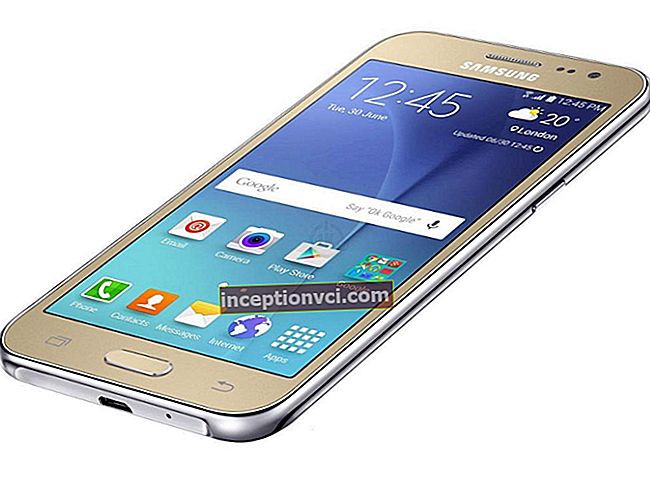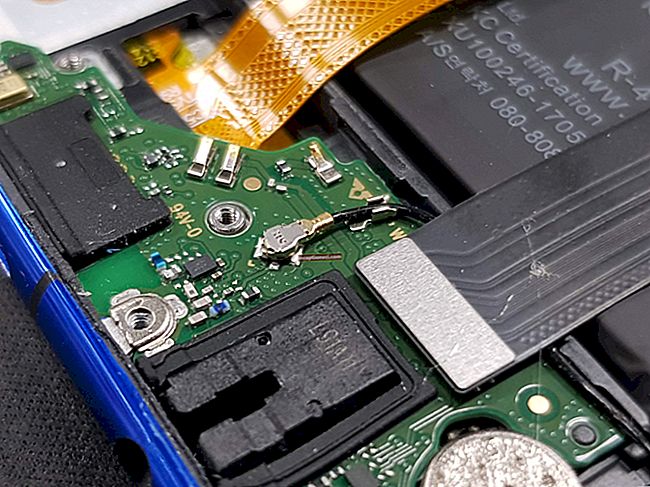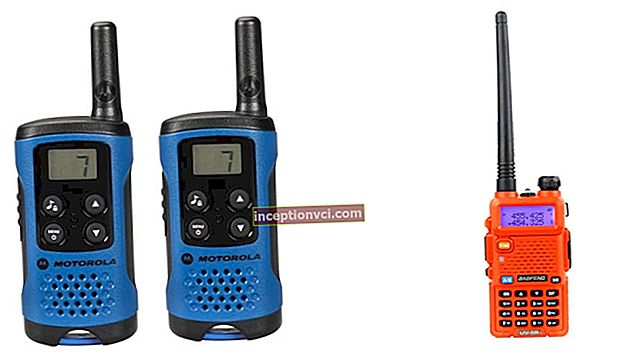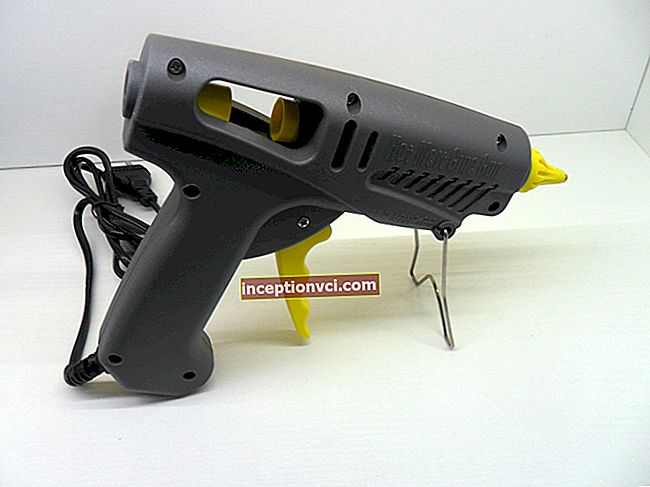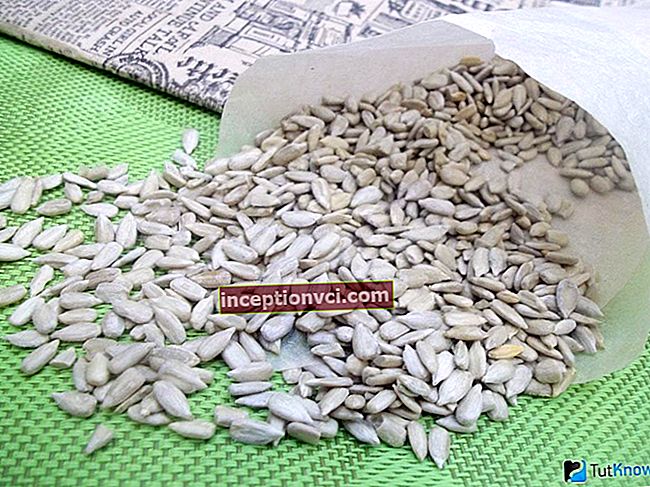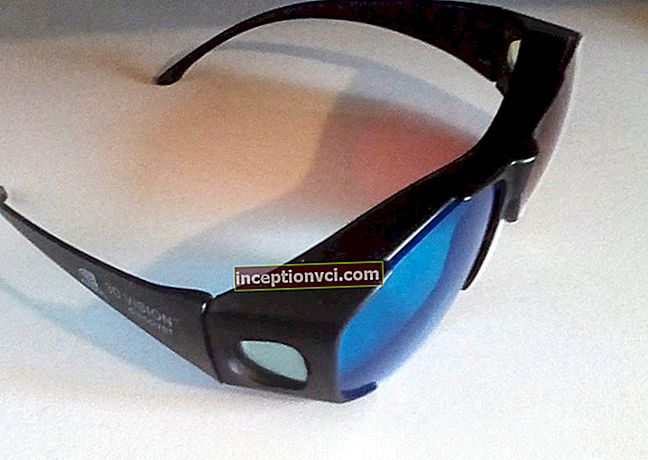Samsung Galaxy Note 3
It was the Galaxy Note line of Samsung that became the first line of phablets - high-performance smartphones with a screen diagonal of more than five inches. In early autumn 2013, the Galaxy Note line received a third-generation smartphone, the Samsung Galaxy Note 3, which became its new flagship. The updated model not only received a display with an even larger diagonal, but also many new useful features that bring the Note 3 model to a new "level". As with past models in the Galaxy Note line, the Galaxy Note 3 focuses on software specifications. It is designed for business and creative people and is rich in various functions, for example, support for control using the stylus stylus S Pen.

The Samsung Galaxy Note 3 smartphone can rightfully be considered the flagship smartphone of the end of 2013 and the first half of 2014, since it implements all the latest developments. The Note 3 has the most powerful hardware platform, massive storage capacity, a superb 5.7-inch Full HD display, a superb 13-megapixel camera, and legendary battery life found in all Galaxy Note smartphones. All of the above advantages are harmoniously combined with the capabilities of handwriting, handwriting recognition, proprietary programs for creating notes, illustrations, diagrams, tables, sketches, drawings, etc.

In one review, it is difficult to list and describe all the advantages of this smartphone, in order to get to know them all you need to use the Samsung Galaxy Note 3 at least a week. Nevertheless, in this review you can get acquainted in detail with all the main characteristics and capabilities of this device. ...
Appearance and ergonomics


Surprisingly, the first thing you pay attention to when you pick up a Samsung Galaxy Note 3 smartphone is, surprisingly, not a display with an even larger diagonal in a smaller case (when compared with the Samsung Galaxy Note 2 model), but the rear panel of the Note 3. The thing is that it is not made of an impractical glossy plastic, but of plastic with a soft-touch rubberized coating, which has an embossed pattern, which makes the surface of the back panel very similar to artificial leather. Of course, people who know a lot about natural leather and products made from it will immediately understand that not a single square centimeter of genuine leather was used in the manufacture of the back panel of the smartphone. But, nevertheless, the coating is very similar to the high-quality leatherette, which is used in the manufacture of notebook covers. The association with a paper notebook is enhanced by the imitation of the stitching along the edges of the back panel and the embossed pattern on the side edges, which evokes associations with the pages of a notebook. All of the above applies to the black model. In the white configuration, the back panel coating is the same, but, for some reason, it has a tougher coating that resembles ordinary corrugated plastic. Regardless of the color of the model, the material from which the back panel is made is durable enough and you will have to try to scratch it.


In the upper part of the rear panel there is a camera module, under which there is a bright LED flash. Just below the camera module, the manufacturer's logo is embossed on the back panel.

Most of the front panel of the Samsung Galaxy Note 3 smartphone is occupied by a 5.68-inch touchscreen display covered with a tempered Gorilla Glass 3. An interesting feature is that in the Samsung Galaxy Note 2, the protective glass protruded above the surface of the side edges, and Samsung Galaxy Note 3 is the other way around - the side edges, rising above the surface of the front panel, seem to form a protective "side" with a height of a fraction of a millimeter.Although the protective glass and high strength - Gorilla Glass 3, no matter how, but if you want and diligence, it can also be scratched, so additional protection in the form of a rim is not superfluous and prevents unwanted damage that may occur when you put the smartphone front panel down ... Above the display is the communication speaker slot, the Samsung logo, the front camera lens, and a set of sensors.




The dimensions of the smartphone are quite large - 151.2 x 79.2 x 8.3 millimeters, it fits well in a large man's palm, but for a small woman's hand the device may be too big, although everything is individual. The Samsung Galaxy Note 3 smartphone weighs in, despite its large dimensions, a little - 168 grams. Although the display of the Samsung Galaxy Note 3 is large, its body is 1.1 millimeters thinner, 1.3 millimeters narrower, but 0.1 millimeters taller than the Samsung Galaxy Note 2. This was achieved by reducing the thickness of the side display bezels. Thanks to the non-slip surface of the back panel, the device fits well in the hand and does not try to slip out. If you get used to it, you can even hold the smartphone quite comfortably with the middle thumb and forefinger of one hand.


Three control buttons are customarily placed under the Galaxy Note 3 display. The Home button is mechanical and has a familiar shape. To the right and left of the home button are the touch buttons "Back" and "Context Menu". The touch buttons are not visible when their backlight or display backlight is off. The backlight of the touch buttons can be set so that it does not light at all, only lights up for one second, three seconds, six seconds, or so that it remains on for as long as the display backlight is on. The special feature of the Galaxy Note 3, regarding the control through the touch keys, is that you can even press them with the S Pen stylus, which was not possible with the Galaxy Note 2. This makes it easier to work with the constant pen control.




The side edges, as befits a flagship device, are not made of plastic, but of chrome-plated metal, which is good news. On the right side edge, in the usual place, there is a power / lock button. Symmetrically to it, on the left side face there is a paired volume control button. On the upper side edge there is an audio output (3.5 mm), an infrared port and a microphone for noise cancellation. On the lower side edge there is a slot for the main microphone, covered with a metal mesh, a compartment for storing the S Pen stylus, a microphone and, most interestingly, a microUSB 3.0 port. The microUSB 3.0 port differs from the microUSB 2.0 port in that it has an additional section, which provides an increase in data transfer speed and faster battery charging. At the same time, the microUSB 3.0 port is built in such a way that it is fully compatible with microUSB 2.0.



The disadvantages of the ergonomics of the Samsung Galaxy Note 3 smartphone include the fact that the multimedia speaker is on the bottom edge, holding the smartphone in a landscape position, it often turns out inadvertently to cover it with the palm of your hand, due to which the sound quality decreases. However, this drawback is insignificant, as the location of the multimedia speaker can quickly get used to, and the speaker itself is loud and sounds great. Also, the disadvantage is that the communication speaker is very close to the upper side edge, and therefore you need to remember that you should not put the device too close to your ear when you receive a phone call.




After removing the battery cover, the user gains access to a dual slot for installing a microSIM SIM card and a microSD memory card. The battery used in the Samsung Galaxy Note 3 is narrower, but higher than that used in the Samsung Galaxy Note 2. The battery capacity has increased slightly and is now 3200 mAh instead of 3000 mAh.

In general, the device has a pleasant design, which underlines the fact that the Samsung Galaxy Note 2 is the most modern version of a business person's notebook.
Screen

The Galaxy Note 3 is equipped with a 5.7-inch display with a resolution of 1920 x 1080 pixels (Full HD). The pixel density is not a record, but it is an impressive 386 dpi. In short, the smartphone display can be described as chic. Like almost all displays of other flagship smartphones from Samsung, the display of the Galaxy Note 3 is made using Super AMOLED technology. It is Super AMOLED, not Super AMOLED Plus.

When manufacturing a matrix using Super AMOLED technology, the Pen Tile pixel arrangement is used, when less than three RGB subpixels are used to build one image point. The use of Pen Tile technology in displays with HD resolution and lower caused many users to complain about the unpleasant jaggedness and ladder effects that appeared due to the non-standard arrangement of subpixels, on abrupt color transitions and very thin interface elements. On closer inspection, these Pen Tile defects were clearly visible. If the resolution is higher than HD, as in the Galaxy Note 3, then the pixel and subpixel density is higher, and therefore, from a distance of more than 15-20 centimeters, these unpleasant effects cannot be discerned. That is why the use of the Super AMOLED matrix cannot be the determining factor when deciding whether to buy a Galaxy Note 3 smartphone or not.

The brightness of the display backlight can be set between 5 cd / m2 and 310 cd / m2. For some users who like to read before bedtime, the minimum brightness of the backlight may not seem dim enough, but from reading at the minimum brightness of the display backlight, you will not be blinded by the high brightness of the screen and will definitely not disturb others. And, nevertheless, you should not abuse reading from the smartphone screen in the dark. The maximum brightness of the backlight, although not phenomenal, is sufficient for most situations. Even in direct sunlight, the display remains readable.

The work of the light sensor deserves special praise, it is very sensitive to changes in the ambient lighting. It is also possible to manually adjust the brightness of the backlight by five points up or down, while not switching to the mode of manually adjusting the brightness of the backlight.


Some users do not like matrices made using Super AMOLED technology, not only for the Pen Tile effects, but also for the fact that the white color is significantly distorted on them when looking at the display from a large angle. As for the Galaxy Note 3, this distortion is not so pronounced in it, especially when compared with smartphones of previous generations. When looking at the screen from a large angle, the green-blue tint is no longer so pronounced even in comparison with the Galaxy Note 2 model, and therefore if you do not set yourself the task to see it, then you may not even notice it.

The advantages of matrices made using Super AMOLED technology have always been considered to be maximum viewing angles, excellent contrast and excellent display of all shades of black. The Galaxy Note 3 display has all this. Even the calibrator refuses to record the black brightness level - 0 cd / m2!
The color gamut of the matrix made using Super AMOLED technology is much wider than the sRGB color gamut usual for desktop monitors, and therefore the shades of the primary colors (blue, red and green) are more saturated. Previously, the color rendering of AMOLED displays was very "acidic", but now, thanks to various color rendering modes ("Dynamic", "Cinema", etc.), this parameter can be adjusted to your own taste.

We are very pleased with the color rendering parameters in the "Professional Photo" mode, it is not for nothing that it is called so "loudly", it has excellent linearity of color temperature, a uniform gradient and highly accurate reproduction of neutral shades. The only drawback of the "Professional Photo" mode can be considered an unusually wide color gamut, which displays colors a little incorrectly, if everything is the same, compared to a desktop monitor.On the display, the image will appear bright and saturated, but on a desktop computer monitor, the same image will appear paler.

In general, the display is very good, and all its shortcomings are insignificant and cannot significantly affect the comfort of working with the Galaxy Note 3 smartphone.
Hardware and performance

Like the flagship Galaxy S4 model, the Samsung Galaxy Note 3 smartphone will be presented in several configurations, which will differ in hardware platforms. The SM-N900 model is supplied to Ukraine, which is built on the basis of the 8-core Exynos 5420 processor, the cores of which work on the big.LITTLE technology (4 + 4). In other countries, the SM-N9005 and SM-N9002 models will also be sold, based on the Snapdragon 800 processor and additionally designed to work on LTE networks. There is unconfirmed information that the last two configurations will not be compatible with SIM cards of Ukrainian operators, since they will be tied to the region for which they are intended.

If we consider in detail the configuration of SM-N900, intended for the Ukrainian market, then it is built on the basis of the Exynos 5 Octa 5420 processor, which is made according to the 28nm process technology and has two sets of cores. The first kit contains four ARM Cortex-A15 cores, clocked at 1.9GHz and having very high performance, but also consuming a lot of power. The second kit has four ARM Cortex-A7 cores, clocked at 1.3 GHz and consuming less power. Thanks to the use of big.LITTLE technology, processor kits work in turn, when it is necessary to perform casual tasks, Cortex-A7 cores with lower performance and power consumption are used, and when it is necessary to perform resource-intensive tasks, then only Cortex-A15 cores work. Unlike previous models, in the Note 3 smartphone, big.LITTLE technology is implemented with the GTS function, which allows all eight cores to be connected to work at the time of peak load. In this mode, the background tasks are performed by the "economical" Cortex-A7 cores, and the main tasks are performed by the "powerful" Cortex-A15 cores. Thanks to this principle of the processor's operation, high performance in practice and record performance in benchmarks are achieved. In the synthetic performance test AnTuTu Benchmark, the smartphone scored more than 34 thousand points and, accordingly, turned out to be faster not only than its predecessor Galaxy S4, but also faster than another flagship smartphone - Galaxy S4.

The processor is paired with a 6-core graphics chip Mali-T628, which, like the processor, has an ARM architecture. The video chip has high performance, but it is inferior in this indicator to the Adreno 330 video chip paired with Snapdragon 800 processors. The capabilities of the graphics subsystem supporting OpenGL 3.0 are sufficient for all kinds of tasks, be it 3D games or playing all kinds of video.

Also, the hardware platform of the Samsung Galaxy Note 3 model differs in that it has a RAM module with a volume of not two, but three gigabytes. Available for use 2.66 gigabytes. At the same time, after starting the operating system and all preinstalled applications that constantly work in the background, another 1.3 gigabytes of RAM is taken away from the available RAM. As a result, the user has only a little more than 1.3 gigabytes of RAM available, which is not so much by modern standards. There are no complaints about the performance of the smartphone.

The permanent flash memory in the smartphone is 32 gigabytes (a configuration with a 64 gigabyte flash drive is expected), of which more than twenty gigabytes are available to the user. The rest of the space is occupied by the files of the operating system, user interface and preinstalled applications. If necessary, the volume of permanent memory can be expanded by means of a microSD memory card with a capacity of up to 64 gigabytes. The transfer of applications from internal memory to a memory card is supported, it is carried out by pressing just one button in the properties of a particular application, which needs to be transferred.
Wireless data transfer in the Galaxy Note 3 model is carried out by built-in Wi-Fi 802.11 a / b / g / n / ac, Bluetooth 4.0, NFC, IR LED and GPS (+ GLONASS). It is also worth noting that the device is equipped with an accelerometer, a proximity sensor, a compass, a humidity sensor, a barometer, a thermometer and a motion recognition sensor.
Camera

If earlier the camera was one of the additional and secondary parameters, since it could not compete in the quality of shooting with conventional cameras, now, with a significant improvement in the quality of camera matrices used in smartphones, it has come to the fore. Cameras of modern flagship smartphones can compete in shooting quality even with budget compact cameras, which is why such a parameter as a camera is on a par with such important parameters of any modern smartphone as communication quality, display and hardware platform. That is why some users, who are not very picky about the quality of the pictures, but appreciate precisely capturing a memorable moment, even use a smartphone instead of a camera, taking it, for example, on vacation.

The Galaxy Note 3 model is equipped with two cameras - the main one with a resolution of thirteen megapixels and the front one with a resolution of two megapixels.

The main camera is equipped with a BSI sensor and has a LED flash that has a very high CRI. The main camera does not support optical stabilization, but there is digital image stabilization.

The camera interface is very rich and has a ton of modes that we could see in the Galaxy S4's camera. Among all the variety of modes, I would like to pay special attention to such as "Rich tones" (HDR), "Corrector", "Photo with sound", "Retouch", "Best photo", "Panorama", "Best face" and "Circular shot ".




Of course, I would like to pay special attention to such a mode as "Saturated Tones", since it is actually one of the most useful and is most often used when you need to get a really great photo. The essence of the algorithms incorporated in this mode is not fully reflected in the name, the HDR mode allows you to photograph an object in difficult lighting conditions and at the same time not to lose valuable details either in the dark or in the light areas of the picture. Shooting in the Vivid Tones mode avoids color fading and charcoal shadows. The HDR mode is especially effective when photographing with backlighting (against the sun), as well as in scenes where there are sharp changes in light, for example, when shooting interiors, when you want the view outside the window to be also captured. It is due to the fact that the HDR mode uses an extended dynamic range, in this mode, the smartphone camera, which usually suffers from a lack of photo latitude, can be made a better photo tool in terms of exposure.
On the left is a picture taken in Auto mode, on the right is a picture taken in HDR mode:

Even a non-photo expert will notice the difference between the quality of the pictures taken by the Note 3 camera and the Note 2 smartphone. The Note 3 camera is much better at setting in the Auto mode, which is most often used, white balance in any type of lighting and even in low light - at night and at dusk.
On the left are pictures taken with the Note 3 camera, on the right are pictures taken with the Note 2 model:


The only mode that disappointed me greatly was digital image stabilization. The quality of pictures taken with digital stylization is much lower than the quality of pictures taken with OIS.



Even in comparison with the Galaxy S4 model, the video capabilities of the Samsung Galaxy Note 3 smartphone are wider, they were replenished with the "Smooth motion" mode, in which the recording is carried out in 1080p at a recording speed of 60 frames per second. This effect is especially pronounced when panning the camera when shooting and watching videos on the device's display, a compatible TV or a personal computer monitor, but a service such as YouTube does not yet support this format.
Just like the Samsung Galaxy S4 smartphone, the Galaxy Note 3 model can shoot video in three acceleration modes and three deceleration modes with coefficients of 2, 4 and 8 times. The format when shooting video with slow motion is 1280 x 720 pixels (HD), but in fact the quality of the videos is much lower.When recording in accelerated mode, the format is also 1280 x 720 pixels (HD) and the video quality really corresponds to the declared one. When shooting video, you can take photos, but not with the maximum resolution, but only in the same format as the video - HD. Simultaneously with zooming, the “audio zoom” function is activated, due to which the sensitivity of the microphone to the sound coming from the area of the frame that you zoom in is increased.

The front camera of the Samsung Galaxy Note 3 smartphone, although it has a resolution of only two megapixels, can also take photos and shoot videos at 1080p. The quality of the front camera is enough to provide high-quality video calls and take a beautiful self-portrait.
Operating system and software

The Samsung Galaxy Note 3 smartphone runs on the Android 4.3 operating system and has a proprietary TouchWiz user interface. The Galaxy Note 3 has a special modification of the user interface - TouchWiz Nature UX, which is further optimized for using the capabilities of the S Pen stylus, multi-window and multitasking modes.


The display of the Galaxy Note 3 model is too large to view a window of just one application on it, as Samsung software developers thought and provided the Multi Window mode, which allows you to simultaneously launch and display two windows on the screen. This mode is very convenient, it allows you to open in the upper window, for example, Youtube, Twitter, video player or messenger, and in the lower one - some of the applications or a browser. In fact, it is very convenient and functional. The Note 3 model added the ability to create and save on a special panel, "pulled" from the left frame of the display, program presets that can be used in the Multi Window mode. You can also now swap windows, as well as drag text and images using the stylus from one window to another.



The second multitasking mode of the Samsung Galaxy Note 3 is windowed mode. When selecting the "Multi-window mode" item in the context menu of the S Pen stylus, the user is prompted to select a rectangular area on the screen and the application that should be opened in this area. This feature has several limitations. The most important thing concerns the minimum size of the area in which the window should be displayed, it is limited. It is also worth noting that many utilities are displayed disproportionately in small windows, which is why their elements are distorted. If the application, working in multi-window mode, is not in demand, then it can be collapsed into a small circular diagram. Chart data is displayed on top of other elements on the screen. If necessary, an application that works in multi-window mode can be expanded to fill the entire screen of a smartphone.

The unlock screen of the device delights the user with colorful graphic effects. Of course, due to the specific animation, the TouchWiz interface does not work as fast as we would like, but, nevertheless, desktops and menus scroll quickly. The graphics coprocessor fully copes with the obligations imposed on it.


Of the branded pre-installed applications, I would like to mention My Magazine, a utility that collects news from various sources, similar to Flipboard. The application is called by double clicking on the "Home" button or by swiping the desktop from bottom to top. If you are not in the habit of using an application of this type, then frequent accidental calling of it will make you nervous, and if you have such a habit, then you will definitely like it.



Also installed on the Samsung Galaxy Note 3 smartphone are the S Planner (planner), SketchBook, in which you can draw, S Health (a program for interacting with various accessories to help keep track of your health), Evernote (functional notebook) with one year of premium subscription and Dropbox (cloud storage, in which 50 gigabytes of space is available to the smartphone owner completely free of charge).Just like other Samsung smartphones and tablets, the Note 3 comes with Samsung HUB preinstalled as an alternative to the Google Play app store. At Samsung HUB, the owner of a Note 3 smartphone can buy books, games, tutorials and useful apps. It is worth noting that in the smartphone, special attention was paid to the close integration of the Evernote and S Note programs, which is why they are now not interchangeable, but complementary. It is symbolic that special attention was paid to the notebook programs in the Note 3 model, this once again emphasizes the model's specification.

Programs such as S Finder (a search engine for the contents of a smartphone) and the aforementioned S Note, in which the degree of pressing the stylus on the screen is recognized, turned out to be very useful. The function "Writing on the screen" can be called quite interesting. Using this function, a screenshot of the current screen image is taken, after which you can write text on the screenshot using the stylus.

I was pleased with the ability to enable notifications for any of the applications preinstalled on the smartphone. In the Google Play application store, you can download many applications that can enter a wide variety of spam and advertisements into the notification line, and when you turn off application notifications in the smartphone settings, this information does not "pop up", it is very convenient.
It is also impossible not to say a word about the Samsung Knox mode, which is like a virtual smartphone, which is very encrypted and protected from prying eyes. Samsung Knox is a "hidden" mode, and therefore, all actions performed in Knox mode are not displayed during normal operation, be it browsing history, text messages, calls, letters, pictures, contacts, notes, etc.

In order to get to the desktop of the Knox mode, you must enter a password. If the password is entered incorrectly twenty times, then all information stored in Knox will be erased and will not get to "hackers". The icons for utilities that can run in Knox mode are marked with a padlock. If necessary, programs that support Knox mode can be purchased from Samsung Knox Apps. Certainly, there are users who will really like and need this program. Screenshots of the screen in this mode will not work, because you will not sacrifice anything for the sake of secrecy.
Multimedia potential



The Samsung Galaxy Note 3 has a functional and good sounding pre-installed player. Music lovers will appreciate the presence of a functional equalizer and proprietary SoundAlive effects processor, with which you can allow the player to choose the necessary sound parameters based on the genre. The user can independently set the sound parameters by selecting one of the presets presented in the player or manually setting the sliders of the 7-band equalizer. Various 3D enhancers, Bass and Clarity are also available, as well as such familiar and not very familiar sound effects as studio reverb, concert hall reverb, imitation of the timbre of a tube amplifier, imitation of 7.1-channel sound, etc.

The standard player has the ability to optimize the sound (Adapt Sound) in headphones. All headphones are different, and the frequency characteristics of most headphones are far from ideal. Therefore, the use of Adapt Sound technology allows you to amplify the sound of unprocessed or poorly developed frequencies. The elaboration process is as follows. The user is asked to listen to a number of songs and give a “Yes / No” answer to the question “Do you hear the sound?” After listening to each of the tracks. This tuning technology really works, after tuning you can hear new colors and details in already familiar compositions.


Using a standard player, the Samsung Galaxy Note 3 out of the box plays music in MP3, FLAC, Vorbis, WAV, WMA and AAC / AAC + / eAAC + formats. In addition, the player reproduces 24-bit / 192 kHz resolution formats.


There are also no complaints about the work of a standard video player, it plays H.264, H.263, MPEG-4, VC-1, WMV7, WMV8, MP43, VP8, AVI, HEVC and MKV videos without any problems. It is quite convenient to rewind videos using the S Pen stylus, for example, the further the stylus is moved vertically from the scroll bar, the slower the video scrolling speed. With the help of pinning / spreading your fingers in a certain area of the video, you can zoom in and, accordingly, remove individual parts of the frame. It is also convenient to adjust the sound volume and backlight brightness. It is very convenient to watch videos on the huge display of the Samsung Galaxy Note 3 smartphone.

In part 2 of this review, you can familiarize yourself with smartphone autonomy, the capabilities of the S Pen, and a list of available accessories.

